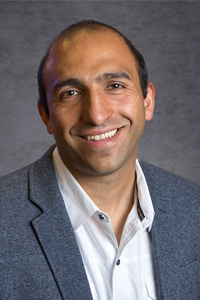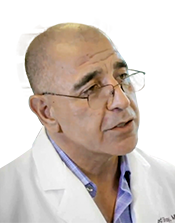At the beginning of 2015, I discussed the technologies that would influence the growth of private practices going forward. Enabled by mobile and cloud computing, integrated practice management (PM), electronic health record (EHR), patient relationship management, and actionable analytics, as well as interoperability were top of mind, with the integration of statistics from patient wearables, benchmarking, and actionable alerts as specific technology solutions for private practices to consider.
Some of these technologies have gained traction while others remain a goal to attain. At the same time, innovations have emerged to help private practices not only compete but thrive in the era of consolidation and healthcare reform. Let’s take a look at how providers are using technology and how they may further engage their patients while thriving as businesses.
Cloud- and mobile-enabled technology as foundation of modern practice
Cloud technology has been around for quite some time now, but I’d estimate that more than 50 percent of private practices still use server-based applications. New entrants into the practice market, particularly those with technology-savvy leadership, are definitely embracing the cloud. These new providers are building their practices around all the technology elements I discussed three years ago. Yet even these modern practices must be vigilant and do their due diligence when identifying cloud-based applications to suit their needs. Some vendors offer so called “fake” cloud: a hosted server solution which is not a true shared environment accessible from any device.
Cloud adoption will absolutely continue for practices that are server-based. Understandably, it’s hard to switch a working practice, but we do see them moving to the cloud when their server applications can no longer keep up with the demand of the new generations of patients.
Workflow automation is a must for successful patient engagement
Given today’s consumer-oriented mentality about healthcare, patients want and need an automated process for all interactions with their medical providers.
As a patient, if I am online searching for a physician, I should be able to look at comments on the doctors in my network, schedule an appointment with the one I select either on a desktop or phone, and receive a reminder of that appointment. I should also be able to provide feedback on my visit and experience. This is where innovations such as Google-interfacing reputation management platforms come in to bring patient engagement closer to how retail, services, and other sectors engage with customers. Private practices can manage their online presence like any other business, obtain feedback from patients, and respond to it in a timely manner.
The physician’s office should also be able to check my benefits, manage my wait time, automatically file claims and receive payments, view day/week/month closings, and send out digital statements. None of it is doable in an efficient and patient- and provider-friendly manner without automation.
Securely automating and interconnecting these processes enables providers to avoid some of the mounting costs of doing business while being responsive to the needs of patients and payers. Ideally, providers should have unified, easy-to-use solutions for all parts of their practice, with one workflow, one database, and one log-in, accessible from all major browsers and on multiple devices.
Continuous engagement for lifestyle management
Everyone is excited about the potential of Fitbits and other wearables to deliver real-time patient data that could both engage patients and help their providers optimize treatment. However, we are far from realizing this integration. Even in the value-based care environment, there are no incentives for private practices to adopt the technologies that would help them proactively manage patient lifestyles. Practices are only reimbursed for managing patients from one visit to the next rather than providing continuous care management that has the potential to significantly reduce care costs.
There is plenty of evidence now that factors such as lifestyle (from exercise to diet to work habits) and social determinants of health (where people are born, live, learn, work, play, and age) account for as great, if not greater, portion of outcomes as clinical factors. This is a tremendous opportunity for the industry to enable providers with appropriate reimbursement and technology to improve the health of our country.
On the lifestyle technology front, think about patient reminders to take medications, fill prescriptions, balance food intake, and check in on both physical and mental health-related issues. Such continuous engagement can be accomplished either by pushing lifestyle applications or sending text messages and responding to communications from the patients.
We are seeing this emerging trend with some employers who are betting on preventative care to keep their employees healthy. They negotiate with payers to offer successful wellness programs that are typically popular with employees. By shifting more funds to lifestyle management, we have more opportunities to reduce costs dedicated to chronic care management. I hope that Medicare will begin to cover lifestyle management medicine, with private health insurance companies following suit.
Future is in technology-enabled continuum of care
Change in healthcare technology does not always occur as quickly as we would like, but it is happening now more rapidly than ever. The consumerism of healthcare will continue to grow and technology will grow with it; ideally, ahead of it. Providers should aim to convert everything that is currently done on paper or that involves a phone call to a digital format that is easily accessible to patients. Private practices are advised to adopt cloud-based systems to optimize the patient experience, including online scheduling, telemedicine, and automated reminders for various purposes, providing options previously unavailable to busy consumers. Technology-savvy patients will be looking for providers who offer this continuum of care and payers will begin to recognize its significance.
The government is also well aware of the consumer-focused technology drivers. I believe we will see a greater consistency in telemedicine rules and reimbursements from state to state and payer to payer. I also truly hope that insurers will begin to support lifestyle management services, helping practices expand beyond chronic care management. Practices can demonstrate the return on investment by measuring results of lifestyle programs through benchmarking and share that data with the insurers.
When we can demonstrate that better-managed lifestyles can reduce or prevent chronic conditions, private practices will have greater leverage in negotiating with payers and be able expand their practices with new, state-of-the-art services and technology supporting the shift. It’s time for payers and providers to move from the visit-to-visit viewpoint to one of long-term wellness.

Published in HIStalk, May 30, 2018 by Arman Samani, AdvancedMD CTO, in South Jordan, UT.





